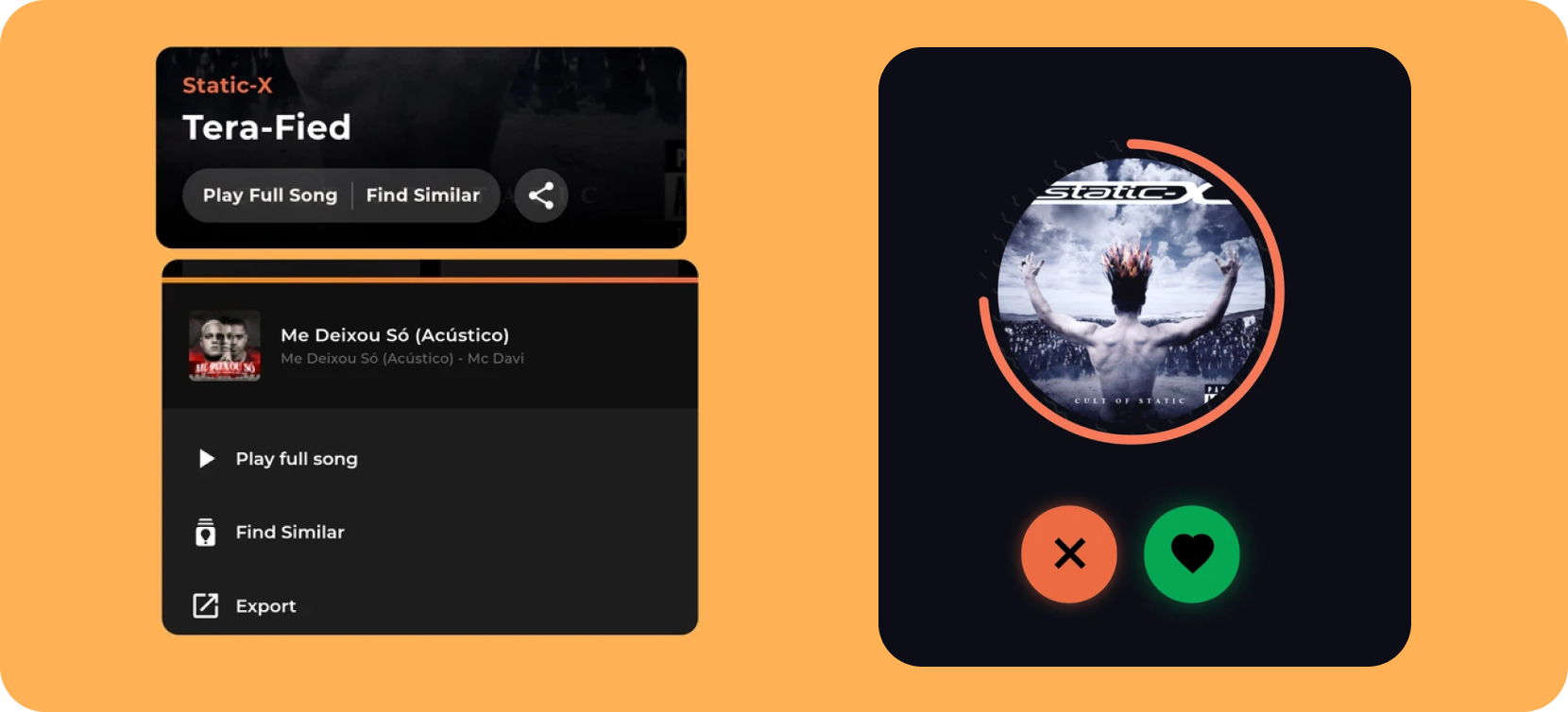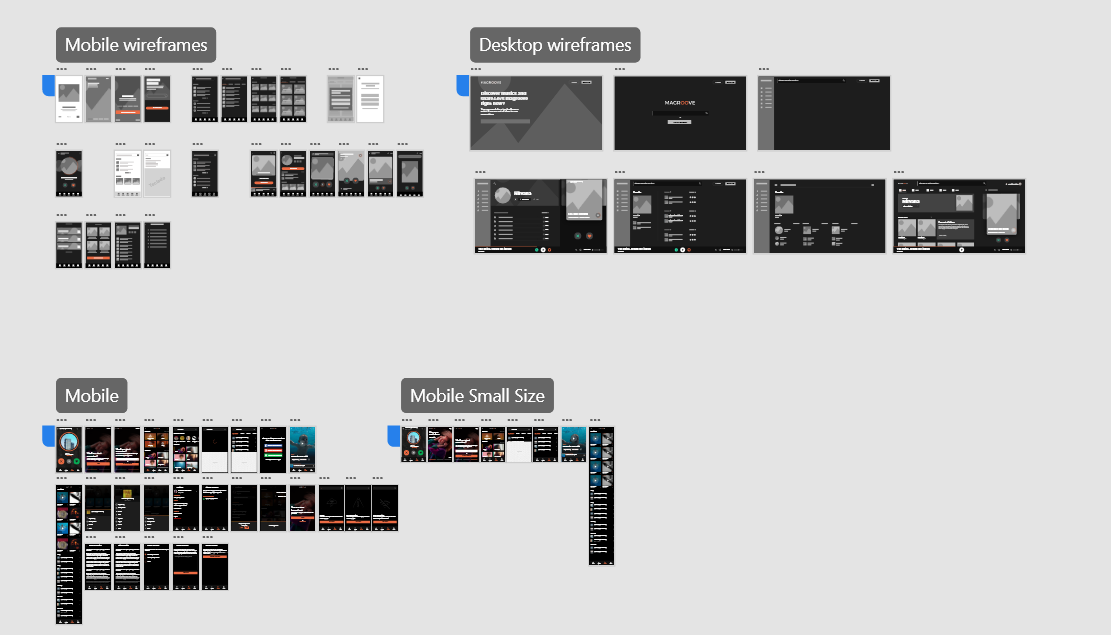Magroove Music
SUMMARY
I designed Magroove’s first listener-facing app to be more than a music player, it became a growth lever for the entire business. By crafting an effortless discovery experience and giving independent artists a fair spotlight, I delivered a product that not only won user love, but also fueled the supply side of our marketplace. A project where I drove product strategy, UX vision, and execution end-to-end.
When I joined Magroove in 2020, the company was already helping thousands of independent musicians distribute their work to platforms like Spotify, Apple Music, and Deezer. The core business was B2B, empower artists to publish and earn.
With new funding from Samsung, the leadership wanted to take a bold step: build a B2C app that not only delighted listeners, but also became a vitrine for emerging artists. The goal was ambitious, create demand on the listener side that would, in turn, attract more independent musicians into our distribution ecosystem.
The Strategic Challenge
We weren’t just designing “an app.” We were designing a new growth loop for the company.
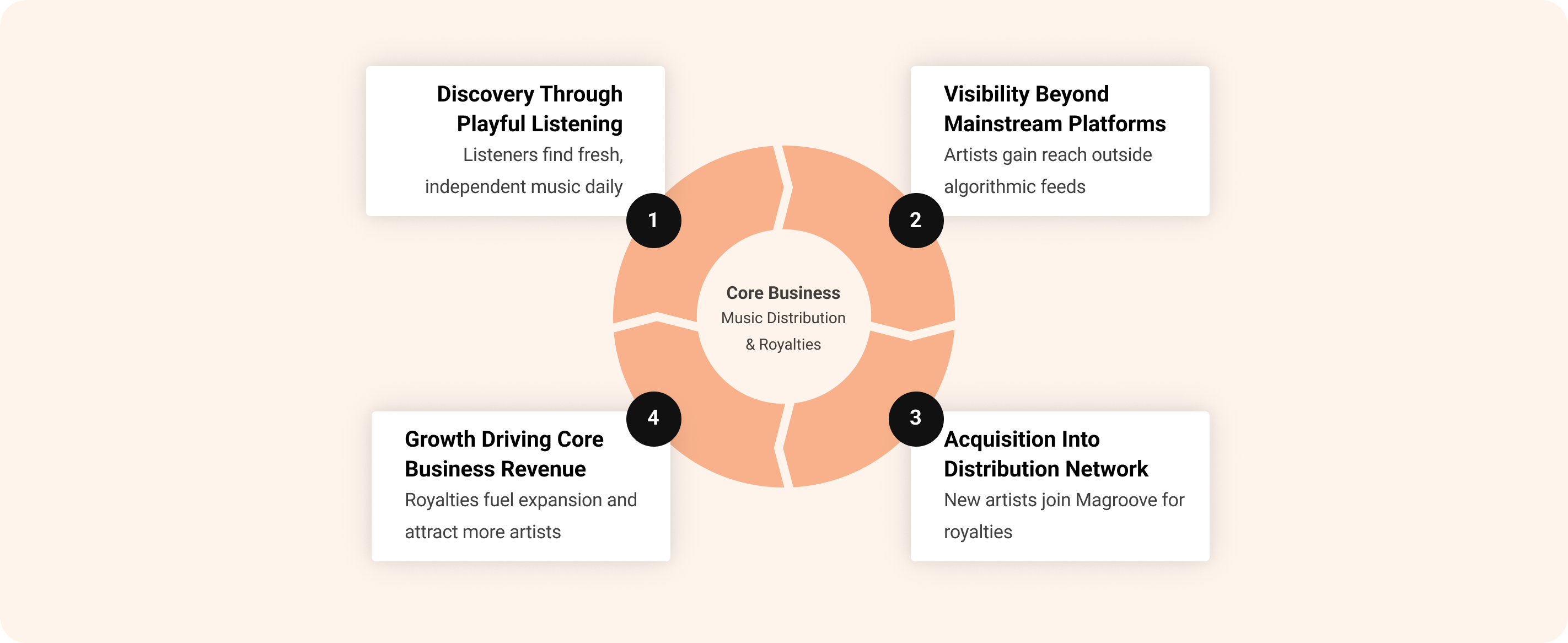
The question guiding us was:
How do we create a discovery experience so frictionless and rewarding that it naturally feeds our supply of independent artists, without diluting the quality for listeners?
Discovery & Market Mapping
To ground our vision, I combined a market scan with user research. On the market side, we looked at Spotify and SoundCloud and saw the same pattern: discovery was either too random or too algorithm-driven, and indie artists were often invisible.
At the same time, we ran surveys, screened responses, and held interviews with heavy listeners, casual explorers, and independent artists. The message was consistent, people didn’t want more music, they wanted meaningful, low-effort discovery. And artists craved reach without being buried by algorithms. Connecting these two perspectives revealed the opportunity space that shaped our strategy.
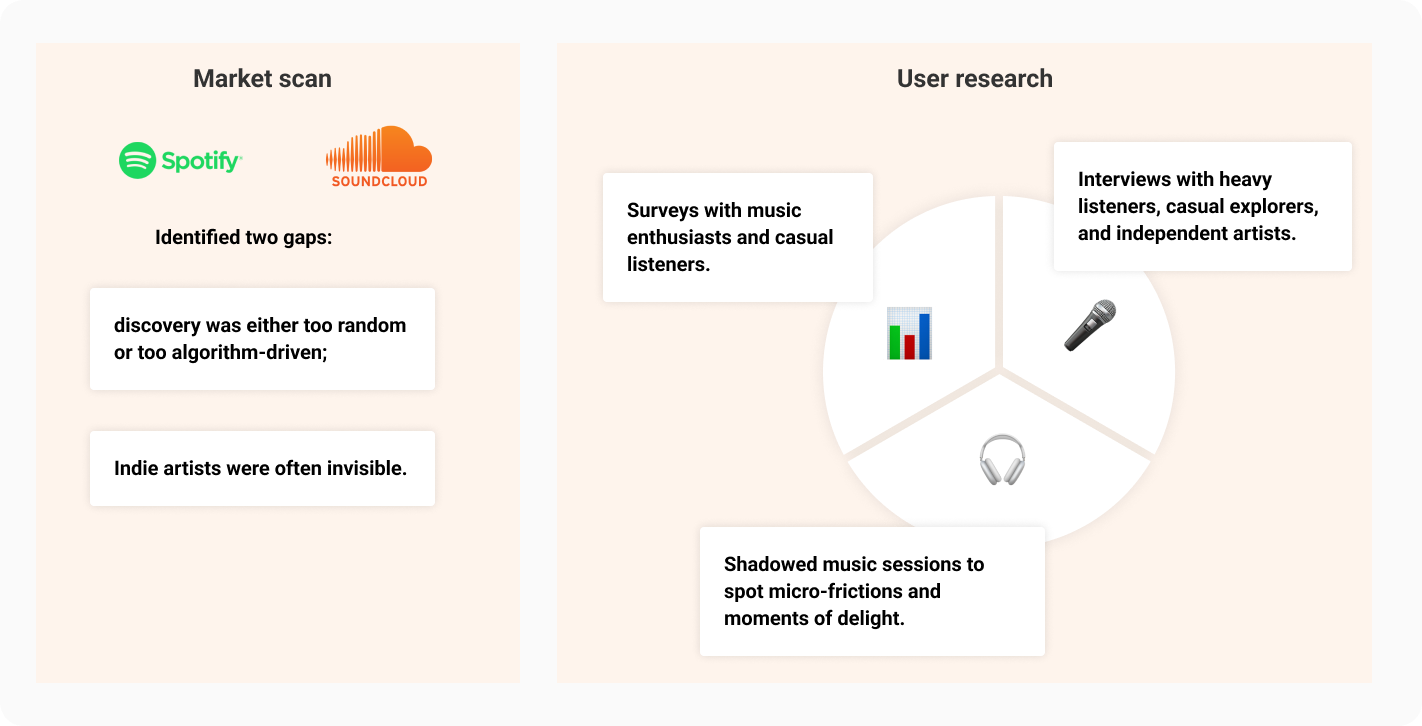
Key insight: listeners didn’t crave more music, they wanted meaningful, low-effort discovery. Artists wanted reach without being buried by algorithms.
Key insight: listeners didn’t crave more music, they wanted meaningful, low-effort discovery. Artists wanted reach without being buried by algorithms.
Design & Execution
With the insights in hand, we deliberately started small. I prototyped low-fidelity flows in Figma and put them in front of real listeners the same week. Instead of testing pixels, we were testing behaviors: would people understand the “one-tap discovery” model? Would artists feel represented without algorithmic bias?
Early sessions showed promise but also friction. Listeners hesitated if the interface asked for too much input. So we iterated fast — stripping away unnecessary steps, refining micro-interactions, and building in moments of delight (like subtle animations when saving a track).
Once the flow felt natural, we layered fidelity. High-fi prototypes became the base for a lightweight MVP, which we released to a closed beta. This stage wasn’t just about usability; it was about validating if the app could sustain the growth loop we envisioned. Were listeners returning? Were artists seeing meaningful reach?
By the time we shipped to the Play Store, the MVP wasn’t a stripped-down product. It was a tightly-focused experience designed to test the riskiest assumptions: that effortless discovery could both engage listeners and fuel Magroove’s core B2B business.
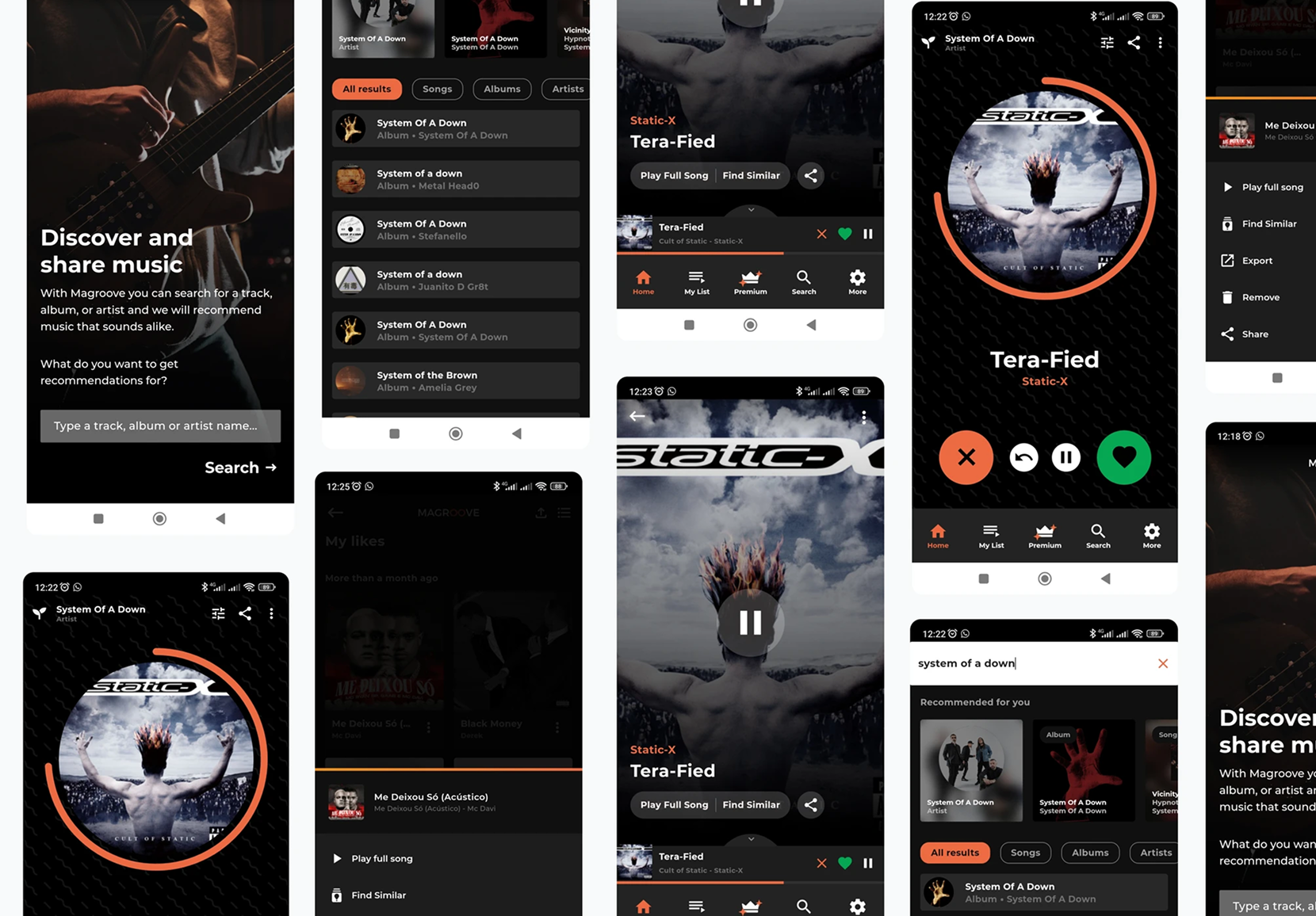
Launch & Early Signals
In just four months, the app moved from concept to public beta.
- 500k downloads (Appstore)
- 85s average from signup to first track.
- Early “save” and “follow” rates indicated strong listener engagement.
- Artist leads from the app began feeding into the core distribution pipeline.
It wasn’t just an MVP, it was the first visible layer of a loop designed to keep both sides of the marketplace growing.
Magroove taught me that building from zero is never just about features. It’s about finding the intersection between user joy and business growth, and making sure every screen, every interaction, is pushing that loop forward.

